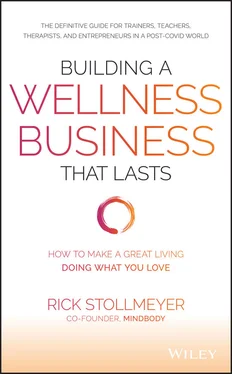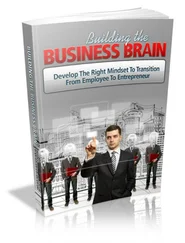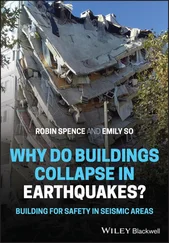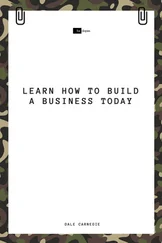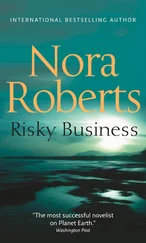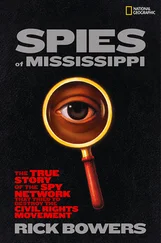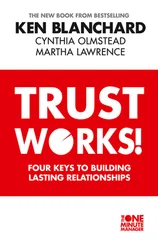And if your business succeeds, you will help hundreds or even thousands of people live healthier, happier lives. You will help transform your community and inspire untold numbers of others to take similar leaps. Those are powerful boons!
The Hero's Journey was never meant to be easy. But if you have what it takes, it is the best thing you can do in your professional life. Regardless of the outcome, the journey is utterly worth it. Perhaps that's the whole point.
In the months ahead, as you embark on your own Hero's Journey, you will most likely have moments of discouragement, exasperation, and doubt. In those times, refer back to the Hero's Journey to remind yourself that this is all part of the process. You will get through this!
2 The Seven Dimensions of Wellness and Maslow's Hierarchy of Needs
The Global Wellness Institute defines wellness as “the active pursuit of activities, choices, and lifestyles that lead to a state of holistic health.” The operative words are active pursuit , and the fundamental truth is that most people need a highly trained practitioner—a teacher, trainer, therapist, or coach—to materially improve their wellness. Wellness is personal. It is about people helping people, and that truth is why the wellness industry exists.
The Mindbody team has been serving the wellness industry for more than two decades and we have witnessed unprecedented growth in that time. Growing at more than twice the rate of the rest of the global economy, the combined value of the wellness industry pre-COVID-19 surpassed $4.5 trillion in 2019 (Global Wellness Institute Report, October 2019). To put that unfathomable number into perspective, humanity spent more on wellness products and services in 2019 than they did on eating out, and 2019 was a record year for restaurants as well.
But all of that was before COVID-19 disrupted our lives, introducing the entire world to a new fear of an unseen enemy few had ever imagined, and upending the economies of the world. That unprecedented global crisis permanently changed the world view and priorities of billions of people, accelerating many societal and technological trends already in motion before the virus hit, introducing a several new trends and interrupting multiple others. The most important question to those of us in the wellness industry is what will happen to our cause and our businesses now as the world recovers from the pandemic and adjusts to a new normal.
Will the wellness industry as we know it still exist in five years? Absolutely! In fact, we are about to experience a massive new wave of growth.
All the research the Mindbody team has done, all the data we have looked at, all of our conversations with industry thought leaders, and all of the rapid technological innovations we are participating in point to one fabulous truth. The next ten years will surely to produce more wellness industry growth than the past two decades combined—regardless of economic recession, social distancing, and virus-related fears. Thanks to COVID-19, wellness has become the largest and most important issue of our age. In the decade ahead, humanity will surely invest and participate in wellness pursuits more than ever before. COVID-19 has in fact ushered in a new wave of wellness, one that will create myriad business opportunities for innovative practitioners and entrepreneurs alike.
Here's the bad news: Many of the wellness business models that were flourishing in the years leading up to COVID-19 simply won't work anymore. The COVID-19 thunderbolt has suddenly and permanently shifted our reality, and as wellness entrepreneurs we must adapt to that new reality or our businesses will die.
To understand how to fully embrace the future, we must first travel back in time and perform a thought experiment. Close your eyes and imagine traveling back in time 100 years. You are sitting with your great-grandmother at her kitchen table. What would you ask her? Imagine asking these questions:
“Great-grandma, how do you stay physically fit?”
“What tools do you use to manage stress and maintain peace of mind?”
“How do you nurture meaningful relationships?”
“What are you doing to expand your mind?”
“What are you doing to protect the environment?”
“Do you find your work fulfilling?”
“What gives your life a sense of purpose?”
What we're talking about, of course, is wellness—in fact, the Seven Dimensions of Wellness—and I'm not sure about your great-grandmother, but I'm confident mine would have responded with something like this:
“What's the point of these questions, dear? Your great-grandfather and I are trying to put food on the table and keep a roof over our heads. We lost one son to World War I a few years ago and the other to the Spanish Flu Pandemic. Our biggest concern now is their younger brother being sent off to another war, or our daughter dying in childbirth. What gives me a sense of purpose? Keeping my family alive! Now, you look hungry. Let me get you something to eat.”
The Seven Dimensions of Wellness
What we are talking about with our great-grandmother in that imaginary conversation are the dimensions of wellness, and these are the central pursuits that drive most people alive today:
Physical Well-being: Keeping our bodies healthy and working optimally for as many years as possible
Emotional Well-being: Having the capacity to cope with the stresses of life
Social Well-being: Staying connected with our community, having the ability to maintain meaningful relationships, and finding love
Intellectual Well-being: Keeping our minds sharp and continually enhancing our wisdom and knowledge of the world
Environmental Well-being: Living in clean, nontoxic surroundings and protecting our planet
Occupational Well-being: Finding work that feeds our mind, body, and soul
Spiritual Well-being: Discovering the purpose and meaning of our lives
These are the Seven Dimensions of Wellness (shown in Figure 2.1), and our questions around them confused our great-grandmother, because she did not live in a world where she could spend much time thinking about them.
Unless your great-grandmother was among society's elites, she would have been as baffled by the wellness conversation as mine. This is because for nearly all of the first 200,000 years of existence, people simply didn't have the time or resources for wellness. The vast majority of them existed at the basic subsistence level, meaning their daily lives revolved around securing food, shelter, and physical safety—on staying alive and producing children.
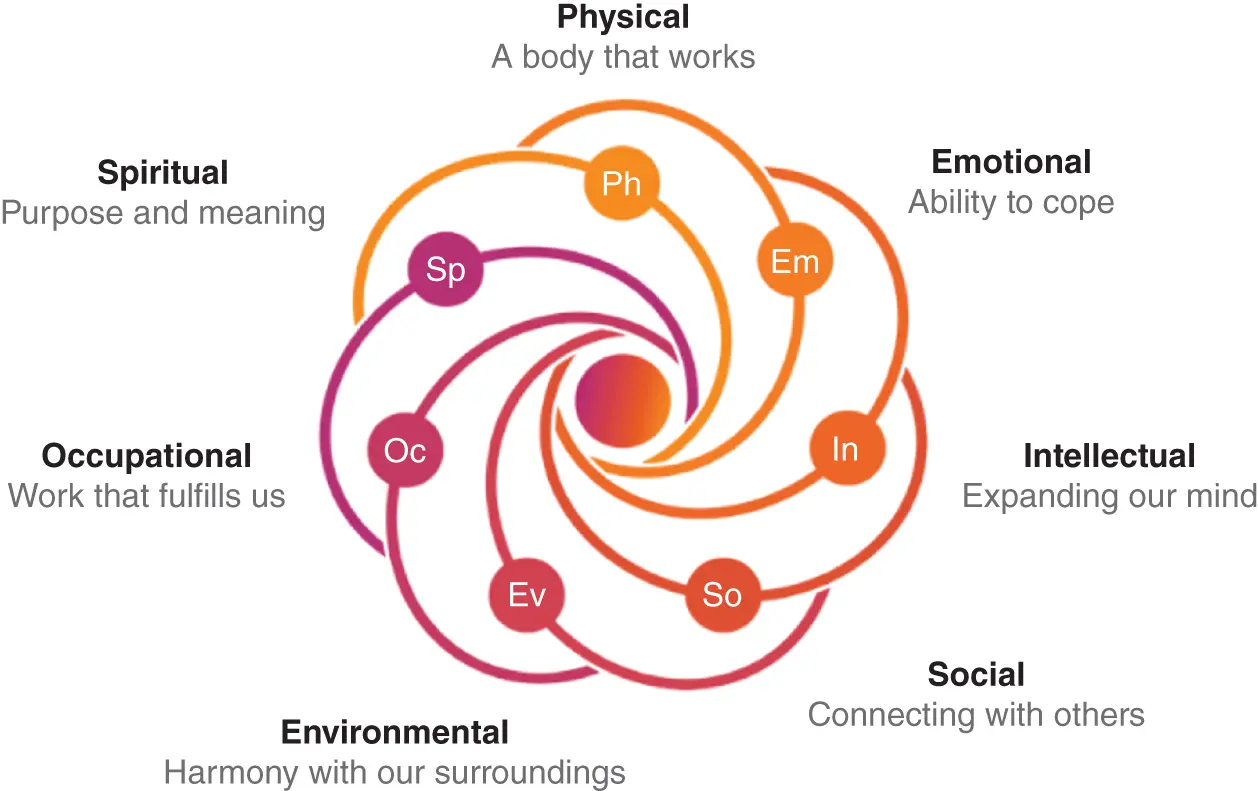
Figure 2.1 The Seven Dimensions of Wellness
For those whose lives could be cut short by childbirth, war, disease, or famine, the causes seemed supernatural and outside of their control. All of us alive today are the descendants of those who survived those incredibly difficult millennia, and their suffering became our strength. Our adaptive minds, our instinct to create family units, our ability to form functioning societies, and our robust immune systems are all the result of hundreds of thousands of years of human evolution.
Despite those inherent strengths, until very recently average life expectancy was only a fraction of what it is today. The average life expectancy of a Roman citizen was 25 years. One thousand years later during the Middle Ages, life expectancy had reached only 33 years. A thousand years after that—around the time we are having that imaginary conversation with our great-grandmother—average life expectancy had reached only 55 years. Through all those eons of time the highest aspiration of nearly every human being was to survive long enough to produce successful offspring.
Читать дальше
